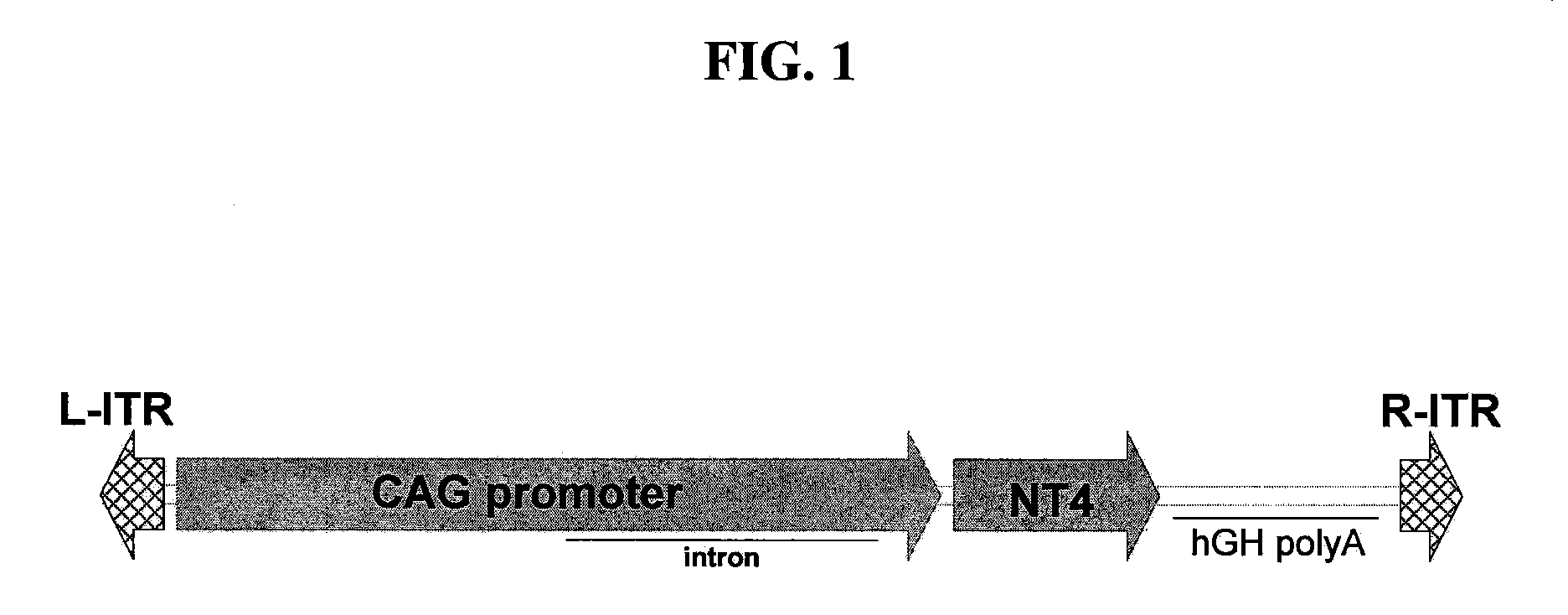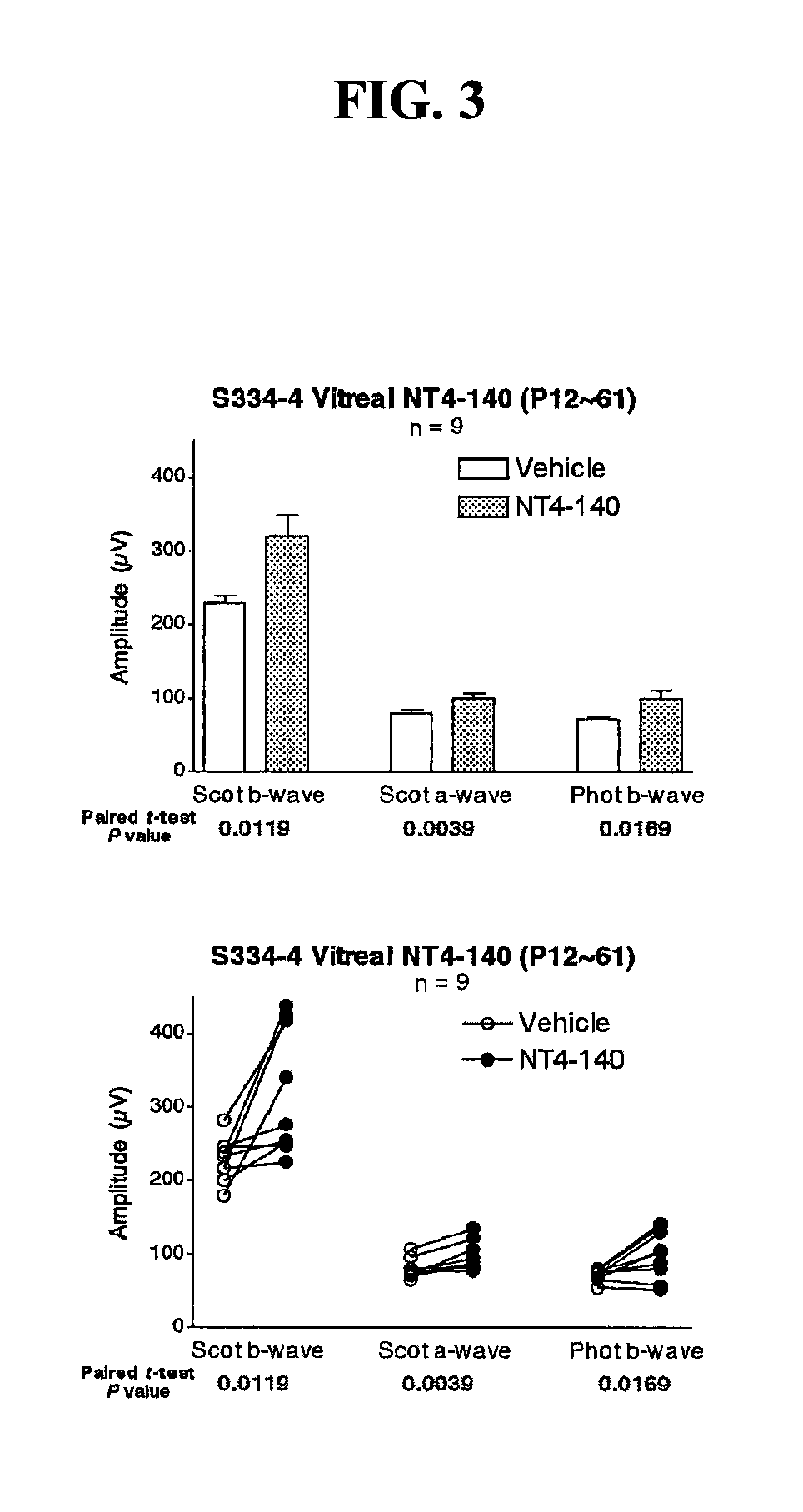Rescue of photoreceptors by intravitreal administration of an expression vector encoding a therapeutic protein
a technology of expression vector and photoreceptor, applied in the field of ocular therapy, can solve the problems of insufficient long-term treatment and maintenance of photoreceptor function by direct injection of these protein factors, and the transgenic technique is not directly applicable to human therapy, and achieves the effect of increasing the amplitud
- Summary
- Abstract
- Description
- Claims
- Application Information
AI Technical Summary
Benefits of technology
Problems solved by technology
Method used
Image
Examples
examples
1. NT4 Expression in the Retina Following AAV / NT4 Intravitreal Administration
[0079]AAV / NT4 mediated expression and subsequent secretion of NT4 from transduced retinal cells was confirmed by immunohistochemistry (FIG. 2). Following intravitreal injection, NT4 was distributed primarily throughout the innermost retinal ganglion cell (RGC) layer in the retina. NT4-positive inner nuclear layer cells (amacrine, bipolar, and / or horizontal cells) and occasional Müller glia cells are also detected in the retina following intravitreal injection of AAV / NT4. Slight NT4 labeling is also seen in the photoreceptor segments following intravitreal injection of AAV / NT4. In addition, NT4 protein is also anterogradely transported from RGCs to retino-recipient areas of the brain, primarily the lateral geniculate nucleus and superior colliculus regions of the brain via the visual pathway.
[0080]The amount of NT4 in isolated retina at 4 weeks following intravitreal administration of AAV / NT4 (1×1010 vg / eye)...
PUM
| Property | Measurement | Unit |
|---|---|---|
| total volume | aaaaa | aaaaa |
| frequency | aaaaa | aaaaa |
| thickness | aaaaa | aaaaa |
Abstract
Description
Claims
Application Information
 Login to View More
Login to View More - R&D
- Intellectual Property
- Life Sciences
- Materials
- Tech Scout
- Unparalleled Data Quality
- Higher Quality Content
- 60% Fewer Hallucinations
Browse by: Latest US Patents, China's latest patents, Technical Efficacy Thesaurus, Application Domain, Technology Topic, Popular Technical Reports.
© 2025 PatSnap. All rights reserved.Legal|Privacy policy|Modern Slavery Act Transparency Statement|Sitemap|About US| Contact US: help@patsnap.com



